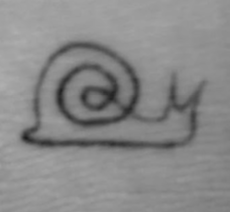My whole life, I have been told that under no circumstances would I ever be allowed to walk into my parent’s house with a tattoo.
They did not care about the color of my hair or wherever I chose to pierce my body, but any type of ink was and continues to be non-negotiable. When I got a temporary tattoo of “upward and upward” and placed it on the side of my ribcage, my mom almost fainted. Yet despite traditional tropes about the nonprofessional nature of having tattoos, I believe they are expressions of identity that tell a unique story to the world.
Even if they might feel extremely outdated, I see merit in my parents’ points. None of the CEOs I would look up to in the business have tattoos, regardless of their gender identity. During the short period of my life when I wanted to be president, the only example I could look to ever admitting to having ink was Mr. Theodore Roosevelt. In all corporate or political professional fields, industry leaders either typically choose to hide the existence of their tattoos or elect to never get one at all. It’s time to shatter that stereotype.
What prompts this culture of hiding the personal details we chose to share with the world? Tattoos hold a connotation traditionally associated with incompetence. Initially public markers of prisoners in 5000 BCE Japan, the initial connection of tattoos to criminal activity has managed to permeate modern-day corporate America. Yet I refuse to believe that competency has anything to do with how or what individuals choose to express on their bodies. I can still be the president of the United States and have a tribute to my uncle on my back. I am still just as qualified to fit into clean-cut, corporate America.
Nothing disproves the theory of tattoos questioning competence more than the United States Armed Forces. Kevin Fischetto ’26, a former member of the U.S. Special Forces sports a full sleeve, stomach, and ankle tattoo. “The guys [I] used to work with are the most competent guys,” Fischetto said, many of which, like him, have multiple tattoos. Although the military demands a certain set of skills distinct from the corporate world, they must display respect, integrity, and quick decision-making that unarguably measure their high levels of competence. Rather, Fischetto described his and his peers’ tattoos as “an expression” and “a work of art.”
Although Cambridge presents few barriers to actually getting a tattoo, students seldom display any form of body art. Hourglass and Chameleon are two tattoo parlors conveniently located next to Harvard’s campus, and there is no dress code that prohibits the display of body ink. However, I still have to actively search for classmates and faculty members with tattoos.
I believe that the standards I set for myself in getting a tattoo would make me proud to show it off, and I think that our generation approaches tattoos sincerely. People will always have impulses to get tattoos they will later regret. Yet every person I have met on campus with a tattoo has a story behind it.
Do tattoos signal incompetence? No. Will people probably still make baseless assumptions about you? Probably. But tattoos do not need to be justified to anyone but ourselves. Even if it might anger my parents, getting a tattoo is still ultimately up to me.
Kate Oliver ’26 (koliver@college.harvard.edu) writes Forum for the Independent.
Maddy Miller ’26: “I have a tattoo of my guinea pig Mac who died at 2 and 1/2 years old. Animals are such a small part of your life, but we know the entirety of their life. I have him with me forever so I will always remember him and know he is with me.”
Olivia Berreby ’25: “My dad and I ran the NYC marathon together in 6 hours, and then got matching snail tattoos to celebrate.”
Arthur Macedo ’24: “I got this tattoo two years ago because I wanted my first to represent my background and thus the outline of my parents home country (Brazil) and a rosary wrapped around for my Catholic upbringing and reminder of faith in general.”
Emily Launderville ’24 “The loon is the state bird of Minnesota, and all of my childhood friends got their own variations of the bird the summer after graduation. The storm clouds represent wind and weather, and are significant from my childhood because growing up the brush of the wind was a loved one saying hello. The red tailed hawk is from a family friend’s hawk I knew when I was young. The knife was my first tattoo and a reminder of people or things we interact with domestically everyday can be dangerous. And the olive leaves around my thigh were from when I entered a stage in my life where I was at peace and had made peace with my past and where I was at in life.”
Corinne Lee ’24 “My tattoo is ‘I love you’ in Mandarin in my grandfather’s handwriting.”

